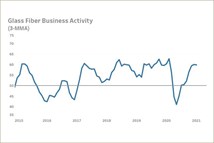Powertrain Simulation Addresses Complex Challenges
Multi-physics analysis software is perfect for simulating vehicle powertrain systems. Even better is simulation software for powertrain development.
Traditional powertrain systems are complex, and the complexity is increased through the electrification of the systems. “Electric machines are the future and already the present of automotive technology,” says Kristian Kuyumdzhiev, applications engineer, product management, for Romax Technology (romaxtech.com). But, he continues, “Bringing the electric and hybrid vehicles to the mass market, integrating electric machines into the driveline is challenging.”
A particular challenge is noise, vibration and harshness (NVH). The electric machine can “meet its design requirements and the transmission meet its design requirements, but the combined system fails due to subsystem interactions.” That failure covers both comfort and mechanical issues: “Drivetrain noise is more exposed due to little or no engine noise; electric machine excitations (radial forces, torque ripple) and drivetrain excitations (transmission error); complex interactions between electric machine and drivetrain; and high speeds causing dynamic unbalance.”
What’s a powertrain specialist to do? Given the time and costs of physical testing, the obvious answer is to turn to design and simulation software. Here are two such packages that recently got a version bump.
Whines & other noises
RomaxDesigner R17 from Romax Technology adds a new electrical machine modeler, including a vibration analysis tool integrated with electromagnetic finite element analysis (FEA), to the software system’s existing capabilities in transmission and driveline NVH simulation, bearing contact analysis, gear technology and process integration and automation. This addition “considers the e-machine and gearbox together as part of the same system,” says Kuyumdzhiev. This contrasts, he continues, with “the current state-of-the-art for electric machine noise simulation; there are a number of FEA packages that allow the analysis of the electric machine on its own.”
R17 can evaluate excitations at any known location and correlate them with test data. An Advanced Whine Analysis tool, the same tool used for gear whine, calculates vibration response. Other analyses include system static deflections caused by applied motor torque and system vibration responses caused by combined gear mesh TE, electric machine torque ripple, radial forces and imbalance excitations.
New, frequency-domain methods for simulating sideband noise in planetary gears help in evaluating rotating gear mesh forces in a planetary gear system, component rotation on the full system vibration response and manufacturing variability. Specialists can view input excitations for each gear mesh in the planetary stage, as well as the resulting response. The results open in a separate application and can be compared, saved and exported.
RomaxDesigner can also generate operating deflection shape (ODS) animations at each excitation mechanism and speed. (General excitations can now vary with speed.) These show, explains Kuyumdzhiev, “where a housing is deflecting the most, giving some indication of what can be improved in the design.”
The new version also introduces a new method to calculate FVA 345 efficiency, which lets specialists compare the efficiency of different lubricants using software analysis rather than testing, saving powertrain developers both time and money. FVA 345 is an industry standard test developed by the Institute of Machine Elements at the Technical University of Munich (Germany).
Other new features in RomaxDesigner are new hydrodynamic models for predicting journal bearing stiffness and performance within a full gearbox system calculation. There’s also a new roller rib contact model that provides more detailed simulations. These simulations are better at accurately predicting bearing roller contact and edge stress magnitudes within a full system and when operating under extreme misalignment or high loads. The roller contact analysis works for all taper and cylindrical rolling element bearings.
Modeling engines large & small
FEV Virtual Engine from FEV has all the components for creating dynamic, 3D parametric models of combustion engines, including the powertrain. FEV software, says Stefan Pischinger, president and CEO of FEV, “allows high-precision two-sided elasto-hydrodynamics, wear prediction and extended timing drive chain friction analysis.” Virtual Engine 25.2, released September 2017, is based on Adams 2017.2 from MSC Software (mscsoftware.com).
FEV Virtual Engine has several modules. The base module lets specialists build all engine subsystems (including a fully-coupled complete engine), but without any subsystem-specific model refinements. The advanced module provides more-realistic dynamics analyses for elastic components. This module’s results can be used to perform consecutive fatigue/durability analyses in third-party software programs, using the analysis results as time-based dynamic load sets.
Specialized modules, for example, include a module for building complete cranktrains for inline, V-type, VR-type, W-type, and Boxer-type engines from a single dataset. This module’s building blocks include engine mount, crankshaft, bearing, flywheel, torsional vibration damper and balancing shaft. A valvetrain module includes several utilities, such as one for optimizing existing lift curves based on velocity, acceleration and jerk. Other Virtual Engine modules concentrate on timing mechanisms and ribbed belt accessory drives, including multi-staged timing and accessory drives comprised of mixed chain and belt drive stages; gear drives; and piston dynamics, including secondary motion, friction and NVH resulting from crankshaft and piston pin offset.
A new flexible 3D gear type in version 25.2 can simulate the gear dynamics where the gear tooth and its base flexibility are of primary importance, even accounting for possible gear tilt and teeth deflection. This version can also calculate the dynamic transmission error of gear pairs, which leads to predicting gear whine in flexible gears. Enhancements in gear tooth flank modifications include details of the tooth flank micro-geometry according to ISO standards, and a new implementation of solid-to-solid contact that also incorporates gear tilting.
This version’s kinematics analysis includes pushrod valvetrains, which is in addition to tappet, finger follower and rocker arm valvetrain types. When integrated with the Valve Lift Designer tool, this analysis can create cam contours directly reflecting any change on the valve lift, including an assessment of critical parameters (such as contact stress). Version 25.2 can also model transmission shafts that consist of several shaft sections with varying radii.
Experience, concludes Romax’s Kuyumdzhiev, “has shown that analyzing electric machine and gearbox separately can lead to incorrect design decisions. Analyzing both allows problems to be identified and fixed early in the development phase as part of a 'Right First Time' development process.”
RELATED CONTENT
-
On Electric Pickups, Flying Taxis, and Auto Industry Transformation
Ford goes for vertical integration, DENSO and Honeywell take to the skies, how suppliers feel about their customers, how vehicle customers feel about shopping, and insights from a software exec
-
TRW Multi-Axis Acceleration Sensors Developed
Admittedly, this appears to be nothing more than a plastic molded part with an inserted bolt-shaped metal component.
-
Increasing Use of Structural Adhesives in Automotive
Can you glue a car together? Frank Billotto of DuPont Transportation & Industrial discusses the major role structural adhesives can play in vehicle assembly.










